Mother Yards and the Native Plant Sharing Network
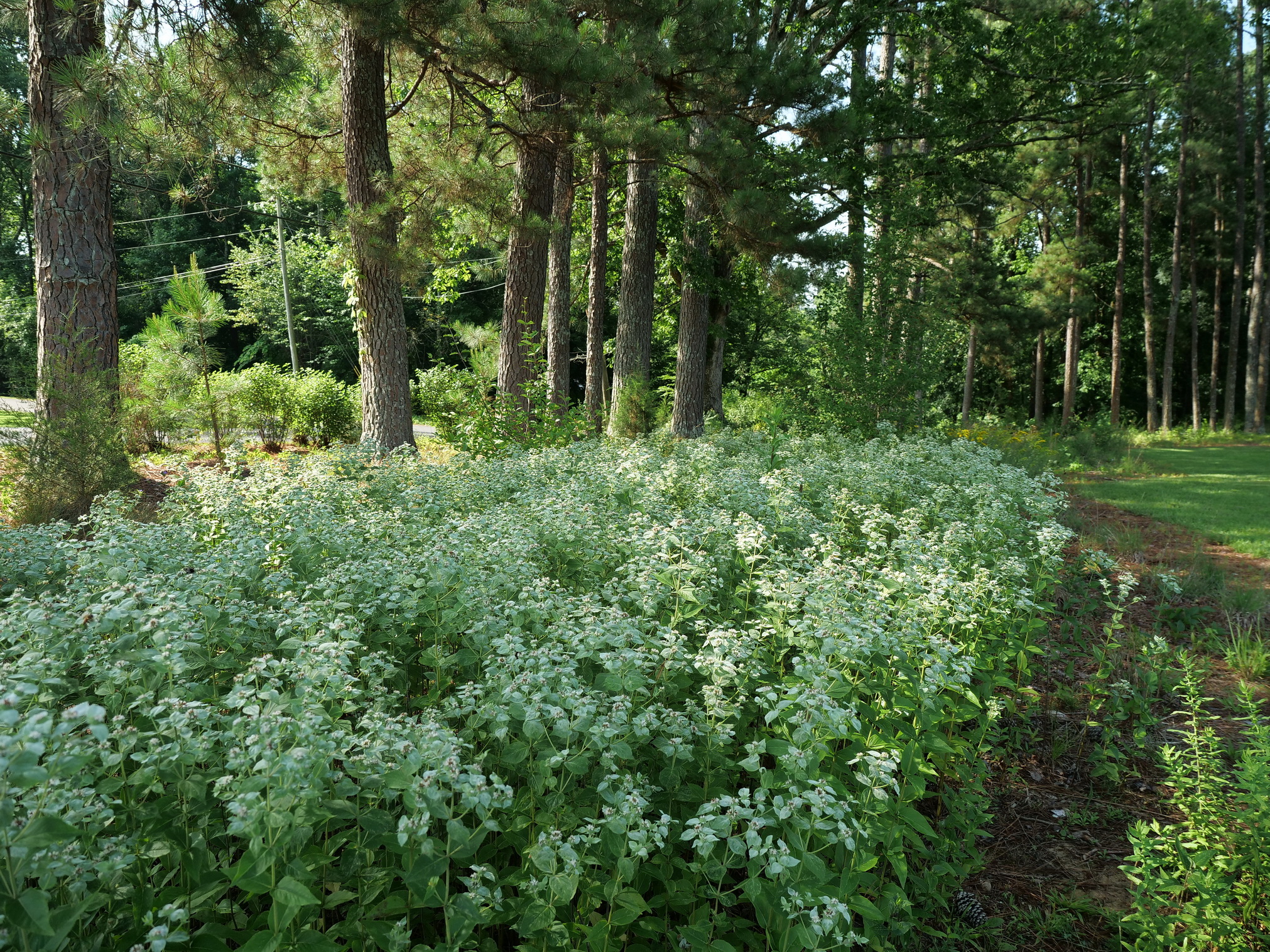
“Then the thought came to me, “We are the Native Plant Nursery.” Every yard inhabited by self-conserving native plants is a birthing place, a mother yard with progeny to share freely with others.”
Mother Yards
Through two long torrid days of the 2016 drought, I planted scores of wild bergamot, mountain mint, goldenrod and other native perennials into the baked-dry clay of my front yard. I had hoped the drought would end before the planting, but it dragged on through late summer and into early fall. I finally relented in mid-October and began chipping the hard-packed soil from the ground to open holes for the young plants. After setting the plants in the ground, I gathered the clay chips back around each one to protect and sustain them. They would survive, I thought, but I could not see how they would ever prosper. Then, just after Thanksgiving Day, the drought broke, and there followed two years of mild temperatures and abundant rainfall. The resilient plants, adapted to the poor compacted soil, grew quickly through the seasons, and began propagating themselves by seeds and runners. Two springs later, young aspiring plants were sprouting throughout the area, taking root right alongside their ancestors to beget a beautiful tightly-woven meadow. Impelled to create an unfettered plot for the newly budding plants to grow in, I hastily cleared a substantial swath of Bermuda grass in the back yard and transplanted some of the youngest plants to the newly opened area; they, too, rooted, and quickly grew. In just a few years I was surrounded by the abundance of native plants that I had always wanted. My yard, once covered in invasive plants, had become something I had not envisioned – a native plant nursery capable of providing plants, not only for the land I steward, but for other lands as well. And as the months went by, with new found awareness, I saw similar bounties of plants emerging in other local native gardens – they too had become nurseries. Then the thought came to me, “We are the Native Plant Nursery.” Every yard inhabited by self-conserving native plants is a birthing place, a mother yard with progeny to share freely with others.
I’ve been observing our community’s mother yards for several years now, and I am persuaded that they are not only easily doable and repeatable — they have the potential to restore native landscapes at a scale not possible by our current reliance on retail nurseries for plants. Drawing on my experience building native landscapes and working with neighborhoods to build community gardens, I’ve brought together some ideas for you: Consider, if you will, the possibility that mother yards can transform our neighborhoods. Essentially, every native plant garden is a community garden, comprising plants grown, garnered and tended by nature and people. Collectively, mother yards can draw cohorts of plants and people together to form an allied “native community,” a living, integral whole where plants and people embody a native plant-sharing network.
The Native Plant-Sharing Network
The native plant-sharing network is rooted in the idea that all plants are self-conserving: They long for life, and through that longing they relentlessly reproduce themselves, giving birth to new plants, each seeking dwelling space in our earth. Every year most mature plants produce a plethora of offspring to ensure that some will survive and continue to colonize our local habitat. It is this self-conserving nature of plants and the surplus plants they produce that makes every yard a native plant nursery. All plants emerging from nature seek an open place to tether themselves, a home with soil to grow in. Likewise, as a vibrant, growing plant community, every mother yard seeks a home for her young, a daughter yard, one might call them, to welcome and gather in her copious offspring. Collectively, mother yards and daughter yards are the foundation of a native plant-sharing network. They are kindred.
Local is Better, Smaller is Better
There are several reasons why a native plant-sharing network should be locally driven. Foremost, though, is the fact that the network mimics nature. In the wild, the spread of plant species is largely a local event. Windblown seeds rarely travel far, most landing close to the mother plant, into a similar niche where they are most likely to survive. Similarly, daughter yards are best founded close to the mother yards that will provide plants for them. The closer the source of the plants, the more likely that they will adapt to the ecological conditions of their new home. This is especially true when the source plants are naturally-occurring (that is, not nursery-sourced plants), emerging from the local landscape. A seedling tree that emerges from my yard will likely prosper in my neighbor’s yard if transplanted there, and plants gathered from my neighbor’s yard will almost certainly grow well in mine. That’s because these plants are kin to the billions of other organisms that share their surrounding habitat. Also, transplanting locally significantly abates the environmental costs of moving plants from one location to another. The closer the source of the plants, the less energy required to move them. Making a trip across town to transplant a bucket-full of perennials from a fellow gardener’s yard to mine may not be worth the environmental costs, whereas transplanting them from a neighbor’s yard down the street certainly would be. And the larger the plants being moved, the truer this becomes. The energy necessary to move large plants, especially trees, is exceptional, and the form of that energy will be fossil fuels burning in large vehicles. Moreover, experience and research show that small plants transplanted from one location to another almost universally grow better than large ones. Large transplants, no matter how local they are, are severely stunted when dug, requiring considerably more time than small transplants to recover and resume their natural growth.
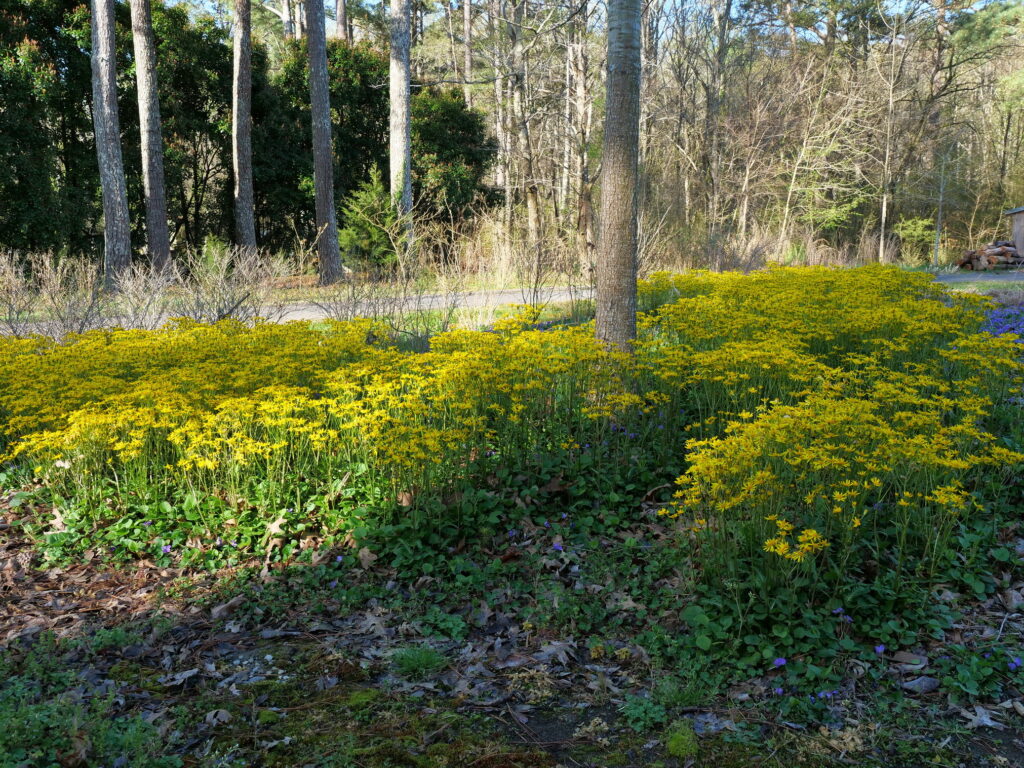
Local Plant Sources are Better
Retail nurseries have long been the primary source of plants for home landscaping, but the original source of those plants is rarely the retail nursery. Rather, most come from large, distant wholesalers that retail buyers seldom, if ever, know. For example, many plants that Midwest and East Coast retailers sell are shipped to them from West Coast wholesalers. While I do not fully understand the economics of the transaction, it’s apparently financially advantageous for both, albeit heedless of the costs to the environment. Similarly, many mid-South wholesale nurseries ship plants to Northern retailers, often across many state boundaries and plant-hardiness zones, with similar environmental consequences. A lot of petroleum-based fuel is burned moving these plants.
This may all be good for the nursery business, but for several reasons it cannot be what’s best for the local landscape. First, it’s far less likely that nursery-grown plants shipped from faraway places will be genetically adapted to the local area where they land. Surely, they will be less prone to healthy growth and more prone to plant problems. In addition, the economics of large-scale national nurseries almost universally requires that their plants be grown in massive, monoculture plant blocks, rendering them especially vulnerable to insect and disease outbreaks in the nursery. Despite their best efforts to do otherwise, these long-distant nurseries have been and continue to be a primary source of disease and insect pest transmission from one state to another, and then from one community to another.
These problems can be greatly minimized if we gather plants from local populations in our mother yards, especially when those yards are naturally managed and diverse. This way, we know the source of the plants – our neighbors’ yards – and we can observe with our own eyes if potential problems are looming with them.
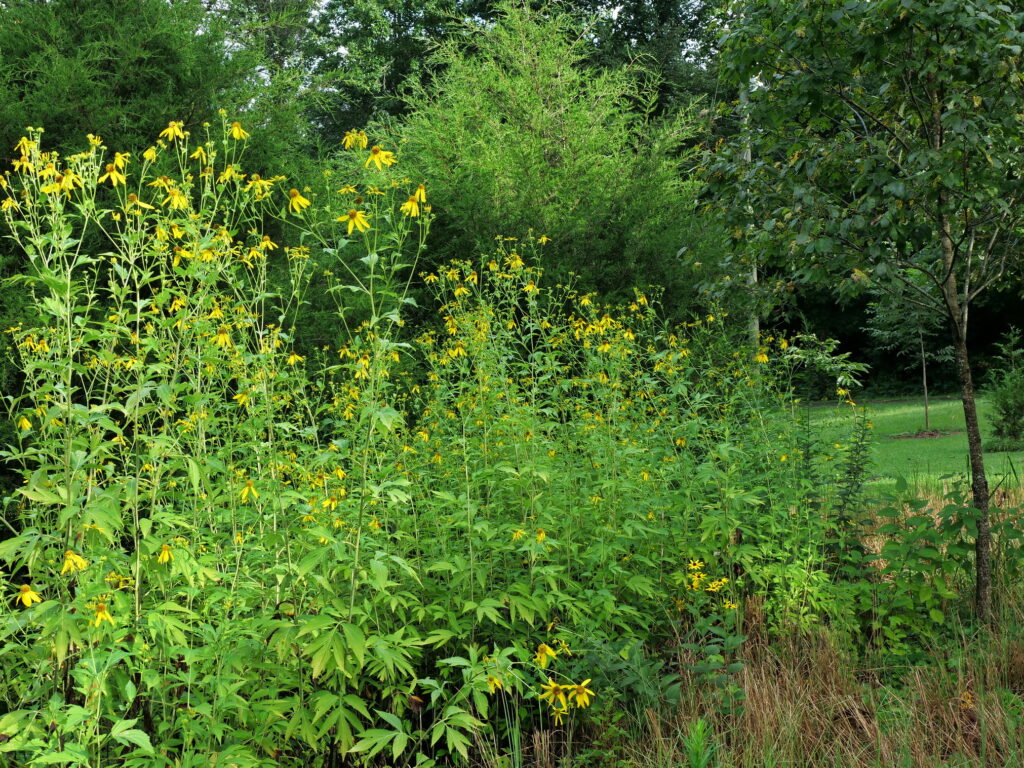
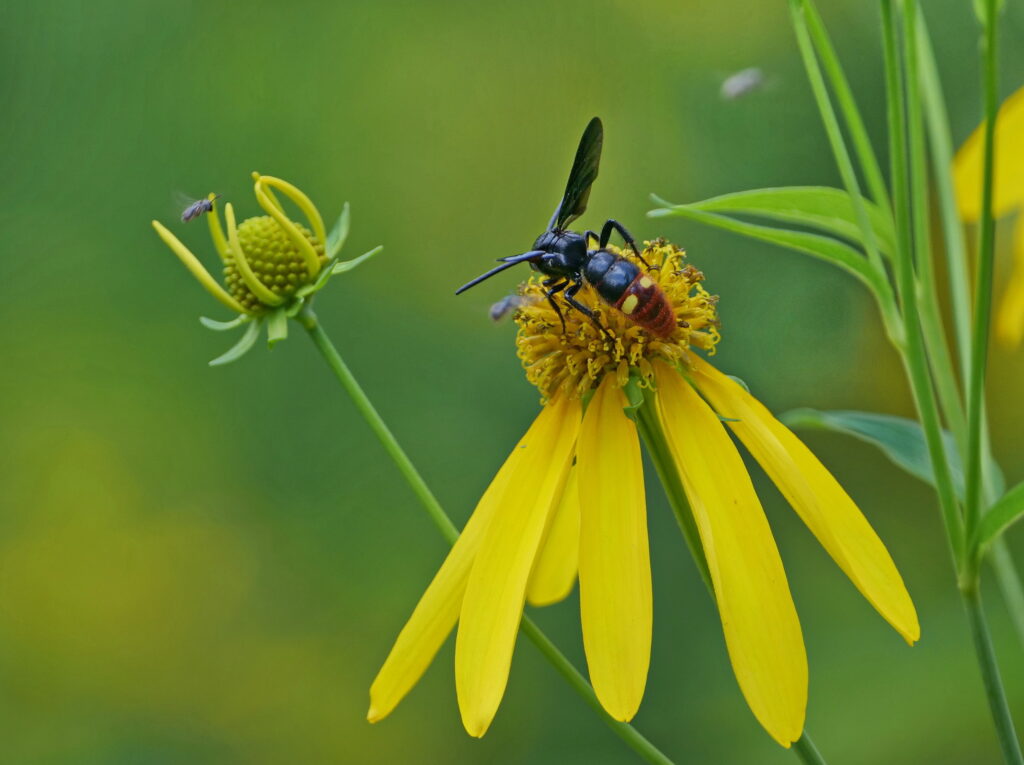
The Complete Native Plant Network
Although commercial nurseries create an artificial growing environment and are not the ideal source for plants, it is hard to conceive of a complete native plant-sharing network without them. Mimicking the way nature spreads plants locally, the majority of plants introduced to daughter yards would best come from nearby mother yards. There are, however, limits to what mother yards can give. Mother yards, like other yards, will be mostly of small-to-moderate size, so the diversity and quantity of plants they can provide will be limited in any one geographical area. This leaves several roles for commercial nurseries in the network:
- to cultivate and maintain a supply of the missing pieces, those naturally-occurring native plants not often found growing in local home landscapes. In this regard, by harvesting and collecting local native plant seeds, storing and maintaining some as seed, and planting the remainder to grow plugs and small container plants, they can function as community-level seed-source nurseries.
- to grow those difficult-to-propagate plants that require special conditions or expertise. As seed-source nurseries, they would be initiators in the plant-sharing network, supplying starter plants to mother yards, which would in turn grow them in the landscape, serving as a future plant source for daughter yards.
- to propagate and keep bulk supplies of the specific native plant species required for large-scale land restoration projects. Only commercial nurseries have this capacity.
“This would be part of a commitment from all who take part in the plant-sharing network. The agreement: To be a giver as well as a taker. Yards that begin as daughter yards evolve over time to become mother yards, native plant nurseries feeding plants into the network.”
Replenishing Mother Yards
Mother yards are birthing places – giving much to to the community – but they will need continual replenishing. Plants – trees, shrubs, vines, forbs, grasses – transplanted from mother yards to daughter yards will be replaced naturally by new seedlings of the same species emerging in a self-conserving native landscape. Still, there will always be soil disturbance and soil loss when plants are dug. While digging plants bare-root is ideal, we need to replace any soil removed from the ground to form a root ball. In addition, the disturbed soil organic layer needs to be restored. Where will the replacement soil and organic matter come from? The answer to replacing the organic layer is simple: Add organic matter to the soil surface from your compost pile or from another source of organic matter in your yard. In practice, the compost pile is essentially an organic-matter nursery.
Well then, what if every mother yard had a soil nursery? The soil nursery can be a simple soil pile that comes from the mother yard and exists in a way similar to a compost pile. Its composition is soil from other projects that required digging, think landscape construction projects. An example: When I recently installed fence posts around my vegetable garden, the soil I dug for the holes became the beginning of my soil nursery. Following that, I dug a trench to install a block border around several garden beds, and added that soil to the pile. Soil from the nursery can then be used to fill holes when soil is removed during transplanting. After filling the holes, the soil restoration can be completed by covering the repaired hole with compost, leaf litter, twigs, or other forms of organic matter gathered from around the yard. Ideally, when plants are dug from a mother yard, the recipient of those plants participates in the restoration by helping replenish the voids that result from the gathering of plants. This would be part of a commitment from all who take part in the plant-sharing network. The agreement: To be a giver as well as a taker. Yards that begin as daughter yards evolve over time to become mother yards, native plant nurseries feeding plants into the network.
Plant-Ins
Plant-ins are community happenings that bring together mother-yard gardeners with daughter-yard gardeners. This may involve a mentoring relationship to cooperatively develop landscape plans, plant lists and timelines for building the new native plant garden. After the plan and plant list are completed, the plant-in process begins: A notice goes out to other local mother yard gardeners in the native plant-sharing network, indicating the plant species and quantity of plants required for the project. When the plants are found and committed to the project, a preparation and planting day is set for community members to bring their daughter plants to the new garden. This is the actual hands-in-the-dirt plant-in, a day of gathering, work and celebration to build and welcome a new daughter yard into the native plant-sharing network. It’s the dynamic, self-conserving network in action, people and plants joining in a common purpose. Plant-ins restore both the native plant community and our human community. Plant-ins connect people to people, plants to plants, and plants to people, all the while creating habitat for the myriad other beings that make their home in the native landscape.
Selecting Plants for Mother Yards
While many gardeners select plants based on the beauty they will add to the garden, and others select plants based on their potential to sustain wildlife, we can also select plants based on their long-term ability to sustain themselves naturally in the microcosm where we plant them. The more sustainable they are, the more likely that they will produce an abundance of seedling plants to share with others. Including this as one of the criteria for selecting plants to grow in mother yards can significantly increase the fecundity of the native plant-sharing network. It’s based in the knowledge that every plant species longs for life differently, as each reproduces to fill a niche in their local habitat. For example, the initial ground layer needs freely spreading plants to quickly occupy the land. Only they can regenerate plants in the quantities that are needed to begin restoring degraded land after an environmental disturbance. They are the rapid-growing “first responders.” They must be aggressive enough to compete with exotic invasive plants, because, in many cases, they will need to usurp the space and the ecological functions that those plants have been fulfilling in the landscape. This first step restores the ground layers of the landscape. Over time, however, these first responders will exhaust themselves, as they naturally do, allowing slower growing, deeper-rooted, longer-lived plants to replace them. Collectively, as all these plants longs for life, they will restore the native landscape.
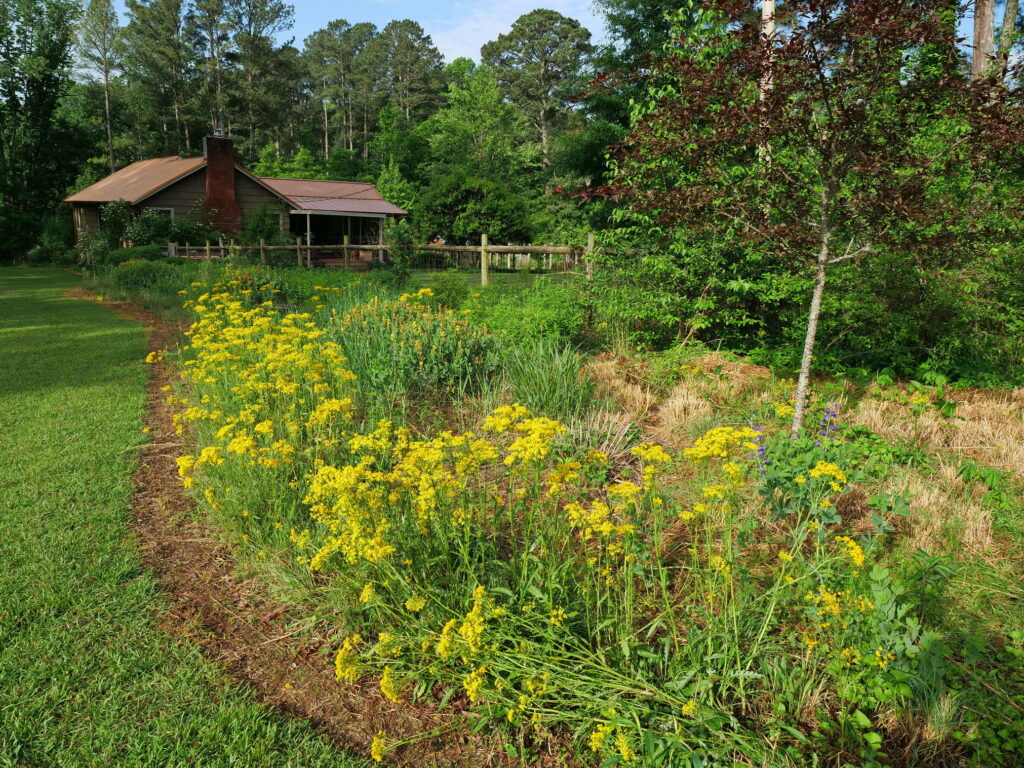
“Our role, as Robin Wall Kimmerer suggests, is to follow the ways of nature, walking with the plant community as co-conspirators in the restoration of the earth. This is not a human-driven movement, it’s a plant-driven movement, with plants leading the way.”
The Economy of the Network
The native plant-sharing network can function under several radically different economic – or financial – paradigms. As a starting point, then, agreeing on the network’s economic structure is of critical importance. The intent of this plant-sharing network is for it to function as a gift economy: Among members in the sharing network, no money exchanges hands, only plants. Nature gives plants freely to us; as we are part of nature, and as the intent of the network is to mimic nature, then we must in turn give plants freely to our neighbors. Our role, as Robin Wall Kimmerer suggests, is to follow the ways of nature, walking with the plant community as co-conspirators in the restoration of the earth. This is not a human-driven movement, it’s a plant-driven movement, with plants leading the way. In the beginning, our role is to let nature happen, to allow naturally-occurring native plants to grow and re-inhabit the land. Then, following nature’s lead, we can provide a helping hand, first assisting their movement across our own land, and then assisting their movement across the artificial boundaries that separate our land from our neighbors’. Our destiny is to become traffickers of life-giving substance, free native plants, furthering the biological and ecological benefits that plants provide. Yes, this land is our homeland; we live in nature, connected and made whole through the web of life. Furthermore, a gift economy is an abundance-driven system operating outside the current scarcity-driven economic infrastructure. This native plant-sharing network will be recession-proof, an essential factor in making plants available to everyone, no matter their place in the community or the current state of the economy.
While the outlier in this economic paradigm might seem to be all commercial nurseries, that’s just not so. For the reasons spelled out earlier, local (not behemoth national nurseries) are indispensable to the functioning of a native plant-sharing network, integral components of the scheme. Collectively, we must therefore ensure their economic well-being. Money will necessarily change hands in the exchange of plants between mother yards and commercial nurseries, and figuring out how this can best work will require some creative thinking. We might look to community-supported agriculture as a model, making use of the same underlying concept to develop community-supported native nurseries (CSNNs). An established native plant-sharing network would provide an immediate, organized base of support for a CSNN. Bringing to bear all the experience, dedication and other resources of a community, local native plant nurseries can flourish through the network. Together, we are the native plant nursery!
The Honorable Harvest
As harvesting technology has advanced, we have become ever more efficient takers from the land, but most of us have learned little about how best to take plants – and how to give back for what we have received. In Braiding Sweetgrass, Robin Wall Kimmerer suggests some guidelines for harvesting plants in the chapter called “The Honorable Harvest.” Here are a few of them:
Know the ways of the ones who take care of you, so that you may take care of them.
Never take the first. Never take the last.
Harvest in a way that minimizes harm.
Give a gift, in reciprocity for what you have taken.
Sustain the ones who sustain you and the earth will last forever.
The native plant-sharing network can only be sustained if we first learn about the plants that sustain us, commit to sustaining them, and devote ourselves to being givers as well as takers. Every daughter yard, in time, becomes a mother yard, a native plant nursery. It’s the reciprocal gift that each of us offers to the community. The extension of that gift engenders gratitude for the gift and for the giver; this in turn engenders more giving. The native plant-sharing network is not an ideological movement – it’s a life-giving campaign of plants and people working together as co-conspirators, benevolent traffickers of native plants in the restoration of our homeland.
Many, many thanks to Emily Campbell who worked with me step by step to properly revise and arrange the words that best express the ideas contained in this post.
Thank you, Emily!